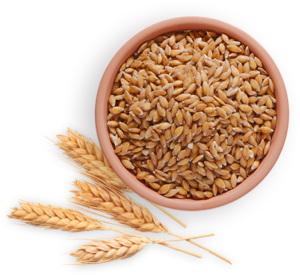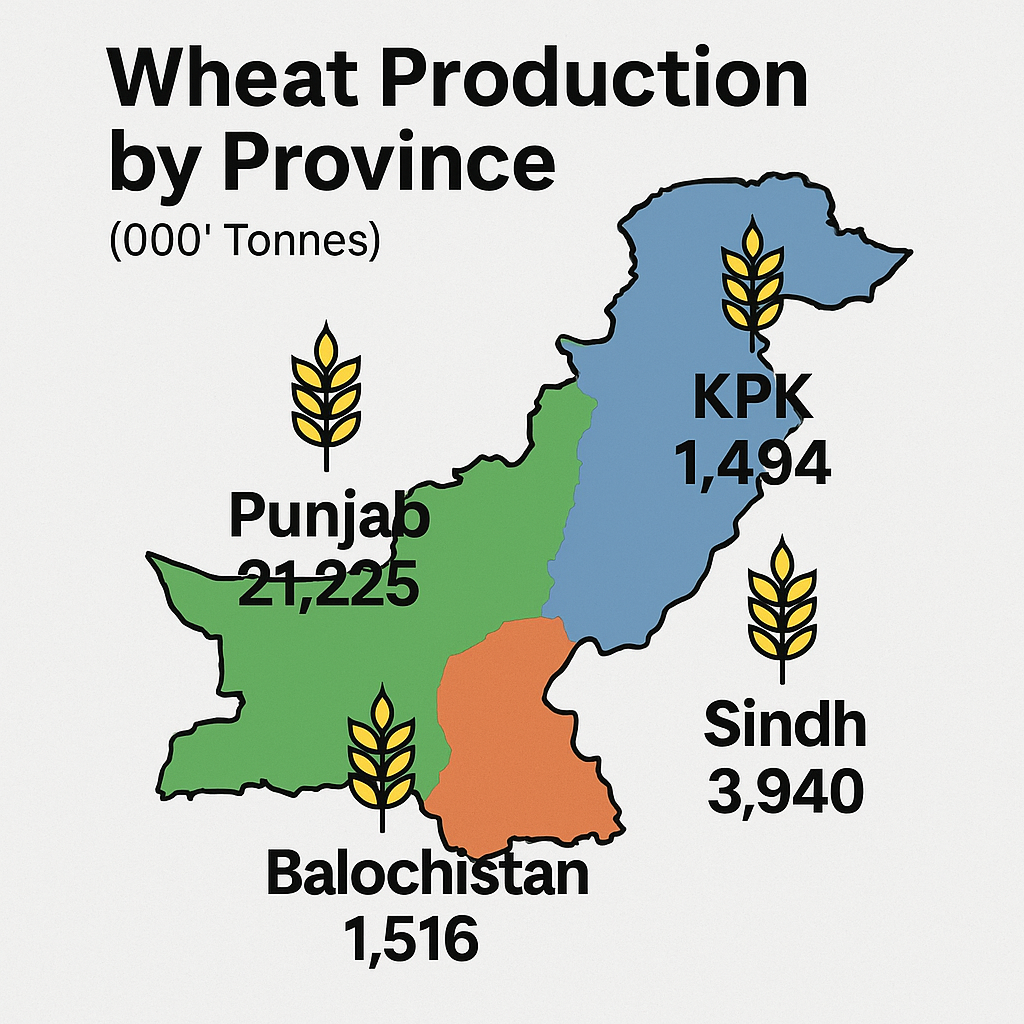Introduction
Wheat is Pakistan’s most important food crop and a key pillar of its agricultural economy. It feeds millions and provides employment to a large section of the rural population. In this article, we analyze wheat production trends in Pakistan from 1947 to 2023, focusing on province-wise comparisons, year-wise growth trends, and contributions to national output.
1. Province-wise Comparison (Latest Year: 2022–23)
In 2022–23, Pakistan produced 28.17 million tonnes of wheat. Here’s the breakdown by province:
- Punjab: 21.22 million tonnes (75.3% of total production)
- Sindh: 3.94 million tonnes (14.0%)
- KPK: 1.49 million tonnes (5.3%)
- Balochistan: 1.52 million tonnes (5.4%)
Analysis: Punjab continues to dominate wheat production due to its vast irrigated lands and favorable climate. Sindh, despite having a smaller share, plays a crucial role in meeting national demand, particularly in the early harvesting season.
2. Five-Year Trend Analysis (2018–2023)
Let’s look at production trends in recent years (in million tonnes):
| Year | Punjab | Sindh | KPK | Balochistan | Total |
|---|---|---|---|---|---|
| 2018–19 | 18.38 | 3.78 | 1.34 | 0.87 | 24.36 |
| 2019–20 | 19.40 | 3.85 | 1.13 | 0.87 | 25.25 |
| 2020–21 | 20.90 | 4.04 | 1.36 | 1.16 | 27.46 |
| 2021–22 | 20.03 | 3.76 | 1.38 | 1.22 | 26.39 |
| 2022–23 | 21.22 | 3.94 | 1.49 | 1.52 | 28.17 |
Observation: Wheat production has steadily increased in the last five years, with significant contributions from Balochistan and Sindh as well. Punjab remains the leader with consistent growth.
3. Long-Term Trends (1947–2023)
In 1947–48, Pakistan’s total wheat output was just 3.3 million tonnes. In 2022–23, it rose to over 28 million tonnes, an eight-fold increase in 75 years.
- Punjab: Grew from 2.6 to 21.2 million tonnes
- Sindh: From 0.37 to 3.94 million tonnes
- KPK: From 0.28 to 1.49 million tonnes
- Balochistan: From 0.05 to 1.52 million tonnes
Key Drivers of Growth:
- Irrigation expansion
- Government support programs
- High-yielding seed varieties
- Agricultural mechanization
4. Percentage Contribution by Province Over Decades
Here’s how the contribution of each province changed over the decades:
| Decade | Punjab (%) | Sindh (%) | KPK (%) | Balochistan (%) |
| 1950s | 78–82 | 10–12 | 6–8 | 1–2 |
| 1980s | 70–75 | 15–17 | 8–10 | 3–4 |
| 2000s | 68–73 | 14–16 | 6–8 | 6–8 |
| 2020s | 73–75 | 13–15 | 5–6 | 5–6 |
Insight: Punjab’s share has remained dominant but Sindh and Balochistan have gradually increased their contributions.
Wheat Production in Pakistan
Tags: wheat production, Pakistan agriculture, Sindh wheat data, Punjab wheat, KPK Balochistan wheat, food security, 2023 wheat trends
Internal Links:
- Importance of Wheat in Pakistan 2025
- Status of Wheat Production in Sindh 2025
- Market Analysis of Wheat
External Links:
Conclusion
Wheat production in Pakistan has grown significantly since independence. Punjab remains the backbone of this production, but Sindh, KPK, and Balochistan are increasingly important in ensuring food security. Understanding these trends helps policy makers, researchers, and the agriculture industry plan better for the future.

